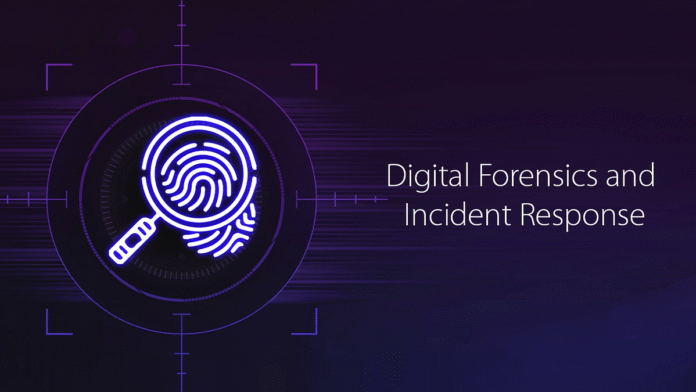Understanding Digital Forensics and Incident Response (DFIR)
Digital Forensics and Incident Response (DFIR) is a critical field focused on identifying, investigating, and responding to cyber incidents while preserving and analyzing digital evidence. This discipline combines two main areas: Digital Forensics and Incident Response, each playing a vital role in cybersecurity.
What is Digital Forensics?
Digital Forensics involves the collection, preservation, and analysis of digital evidence from various sources such as computers, mobile devices, networks, and cloud systems. The goal is to ensure that the evidence is admissible in legal proceedings. Key tasks in digital forensics include:
- Data Recovery: Retrieving lost or deleted data from storage devices.
- File Analysis: Examining files for signs of tampering or unauthorized access.
- Log Review: Analyzing system logs to trace user activities and identify anomalies.
- Chain-of-Custody Documentation: Maintaining a detailed record of evidence handling to ensure its integrity.
What is Incident Response?
Incident Response focuses on detecting, containing, and mitigating cyber incidents such as data breaches, malware infections, or insider threats. It follows a structured approach, typically involving the following phases:
- Preparation: Establishing policies, procedures, and tools for incident response.
- Identification: Detecting and confirming the occurrence of an incident.
- Containment: Limiting the impact of the incident to prevent further damage.
- Eradication: Removing the cause of the incident from the environment.
- Recovery: Restoring affected systems to normal operations.
- Lessons Learned: Analyzing the incident to improve future response efforts.
Key Questions and Considerations for DFIR Preparation
A structured approach to DFIR preparation can be guided by the "6 Ws, 1 I, and an H" framework. This framework helps organizations understand and respond effectively to security incidents.
Objectives
The primary objective is to identify the nature, scope, and impact of the incident.
Key Questions
- What type of incident occurred (e.g., ransomware, data breach)?
- What systems, applications, or data were affected?
- What is the potential or confirmed impact (e.g., data loss, system downtime)?
Actionable Steps
- Initial Triage: Review alerts from Security Information and Event Management (SIEM) systems and Endpoint Detection and Response (EDR) tools to classify the incident.
- Impact Assessment: Identify affected assets and data types.
- Document Findings: Log initial observations in a case management tool to maintain a record.
Example
A ransomware alert indicates encrypted files on a file server. Confirm the ransomware variant and check for ransom notes or exfiltrated data.
Tools
- SIEM: Splunk, Elastic
- EDR: CrowdStrike, SentinelOne
- Forensic Analysis: Autopsy, FTK Imager
Establishing a Timeline of the Incident
Creating a timeline is crucial for accurate analysis and reporting.
Objectives
Establish a chronological view of the incident for better understanding.
Key Questions
- When was the incident first detected, and by what mechanism?
- What is the estimated start time and duration of the attack?
- Are there specific timestamps for critical events?
Actionable Steps
- Timeline Creation: Use tools like Plaso or Log2Timeline to build a chronological view of events.
- Volatile Data Capture: Collect RAM and system logs before shutting down systems.
- Log Correlation: Cross-reference timestamps across logs to identify anomalies.
Example
A SIEM alert at 06:02 PM indicates suspicious activity. Correlate with authentication logs showing failed login attempts starting at 05:30 PM.
Tools
- Timeline Analysis: Plaso, Timesketch
- Memory Forensics: Volatility, Rekall
- Log Management: ELK Stack, Splunk
Understanding the Motive and Root Cause
To prevent recurrence, it’s essential to understand the motive and root cause of the incident.
Objectives
Identify why the system was targeted and what vulnerabilities were exploited.
Key Questions
- What was the attacker’s motive (e.g., financial gain)?
- Why was the system vulnerable (e.g., lack of patches)?
- Were there gaps in security controls?
Actionable Steps
- Root Cause Analysis: Conduct a post-incident review to identify weaknesses.
- Threat Modeling: Assess why the system was targeted.
- Remediation Planning: Develop a plan to address vulnerabilities.
Example
A server was exploited due to an unpatched vulnerability. Recommend patching and implementing a Web Application Firewall (WAF).
Tools
- Vulnerability Scanning: Nessus, OpenVAS
- Patch Management: WSUS, Ivanti
- Risk Assessment: FAIR, NIST RMF
Pinpointing Affected Systems and Locations
Identifying the specific systems and networks affected is crucial for effective response.
Objectives
Determine which devices, servers, or cloud instances were compromised.
Key Questions
- Which specific devices were compromised?
- Did the incident affect on-premises systems, cloud environments, or both?
- Are there geographic or jurisdictional considerations?
Actionable Steps
- Asset Mapping: Use network diagrams to identify affected systems.
- Network Segmentation: Determine if the incident is confined to a specific network segment.
- Cloud Forensics: Collect logs from cloud environments.
Example
A compromised web server in AWS is identified. Collect EC2 instance snapshots and CloudTrail logs for analysis.
Tools
- Network Mapping: Nmap, SolarWinds
- Cloud Forensics: AWS CLI, Magnet AXIOM Cloud
- Asset Management: Axonius, ServiceNow
Understanding the Attack Vector
Understanding how the attacker gained access is vital for strengthening defenses.
Objectives
Identify the methods and vulnerabilities exploited during the attack.
Key Questions
- How did the attacker gain initial access?
- What techniques were used for lateral movement?
- Were any specific vulnerabilities exploited?
Actionable Steps
- Log Analysis: Examine logs to trace attacker activity.
- Malware Analysis: Use sandbox environments to analyze malicious files.
- Vulnerability Assessment: Check for unpatched systems.
Example
A phishing email delivered a malicious attachment. Analyze the email headers and attachment in a sandbox.
Tools
- Network Analysis: Wireshark, Zeek
- Malware Analysis: REMnux, Cuckoo Sandbox
- Log Analysis: Graylog, LogRhythm
Assessing the Threat’s Activity
Determining if the threat is still active helps prioritize containment efforts.
Objectives
Identify signs of active attacker presence.
Key Questions
- Are there signs of active attacker presence?
- Are systems still being compromised?
- Have containment measures been effective?
Actionable Steps
- Live Monitoring: Use EDR tools to detect real-time malicious activity.
- Network Traffic Analysis: Monitor for outbound traffic.
- Containment Verification: Confirm if isolation measures stopped the activity.
Example
Ongoing data exfiltration is detected via unusual outbound traffic. Block the IP and isolate affected endpoints.
Tools
- EDR: SentinelOne, CrowdStrike
- Network Monitoring: Zeek, Suricata
- SIEM: Splunk, Elastic
Evaluating the Incident’s Impact
Assessing the potential consequences of the incident is crucial for business continuity.
Objectives
Determine the business impact of the incident.
Key Questions
- What is the business impact (e.g., downtime)?
- Are critical systems or sensitive data affected?
- What are the short-term and long-term consequences?
Actionable Steps
- Impact Assessment: Quantify downtime or data loss.
- Data Sensitivity Check: Identify if compromised data falls under regulations.
- Stakeholder Reporting: Communicate impact to management.
Example
A breach exposed customer PII, risking regulatory fines. Estimate financial impact and notify regulators.
Tools
- BIA Tools: Archer, Fusion Risk Management
- Data Classification: Varonis, Symantec DLP
- Reporting: TheHive, Jira
Identifying Involved Actors
Understanding who is involved in the incident helps in managing the response effectively.
Objectives
Identify the actors involved, including attackers and affected users.
Key Questions
- Who is the suspected attacker?
- Which user accounts were compromised?
- Who reported the incident?
Actionable Steps
- Account Analysis: Review account activity for unauthorized access.
- Threat Intelligence: Use platforms to identify known threat actors.
- Stakeholder Notification: Coordinate with legal and PR for communication.
Example
A compromised admin account was used for lateral movement. Check logs for unusual login patterns.
Tools
- Identity Analysis: Microsoft Defender for Identity, Okta
- Threat Intelligence: MISP, ThreatConnect
- Case Management: TheHive, CaseFile
Conclusion
Digital Forensics and Incident Response (DFIR) is an essential aspect of modern cybersecurity. By understanding the intricacies of digital forensics and incident response, organizations can better prepare for, respond to, and recover from cyber incidents. The structured approach outlined in this article serves as a comprehensive guide for professionals in the field, ensuring that they are equipped to handle the complexities of digital threats effectively.


